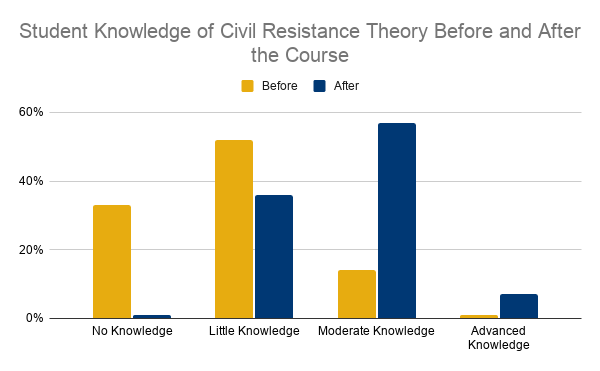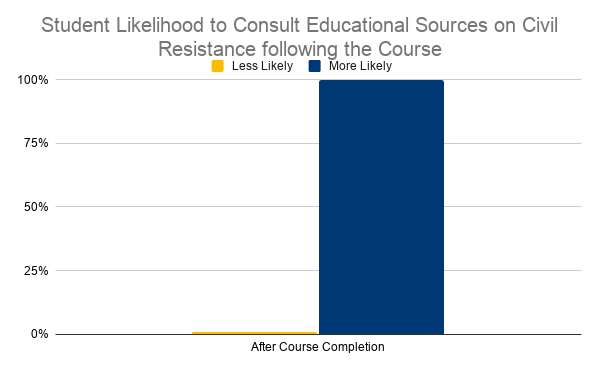Learning Impacts from the 2019 Curriculum Fellowship Program
Selected impact assessment shared by the ICNC Curriculum Fellows who taught courses on civil resistance or courses with a significant civil resistance component in the Fall 2019 and Winter/Spring 2020.
Alice Borchi
Alice Borchi taught “Arts and Activism” in the School of Performance and Cultural Studies at the University of Leeds in the United Kingdom during the Spring 2020 semester. Student knowledge of civil resistance went from 0 to 100 percent, and the students—who were mostly art students—expressed an increased willingness to use their artistic skills within a civil resistance campaign.




Dan DiLeo
Dan DiLeo taught “Theological Ethics, Community Organizing, and Political Advocacy” at Creighton University in the Fall 2019 semester. The students gained knowledge in civil resistance, comfort in speaking about and participating in civil resistance, and a greater understanding of the capacity of civil resistance to be effective even against repressive regimes.

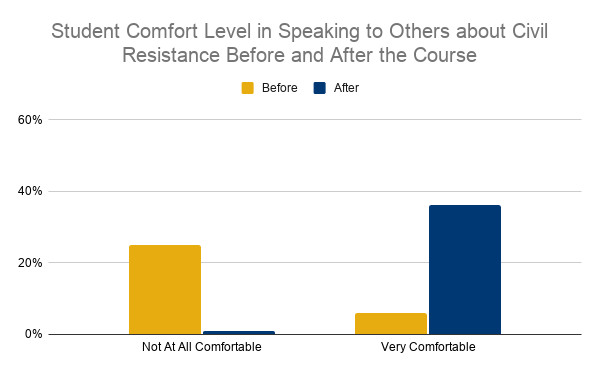


Ying Hooi Khoo
Ying Hooi Khoo taught “Social Movements and Democratization” at the University of Malaya in Kuala Lumpur, Malaysia, in the Fall 2019 semester. The students gained knowledge in civil resistance, a greater comfort with participating in civil resistance actions, and an understanding of strategic nonviolent action’s capacity to affect positive change even in highly oppressive political contexts.





Andrea Malji
Andrea Malji taught “Civil Resistance and Nonviolent Movements” in the Department of History and International Studies at Hawai’i Pacific University in the Spring 2020 semester. Students gained significant knowledge in civil resistance and an understanding of the greater effectiveness of nonviolent action over violent action in achieving a movement’s goals. Student willingness to participate in a campaign doubled following the course.



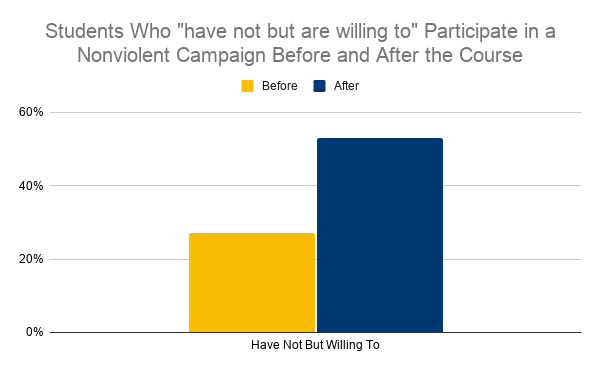
Cassie Parkin
Cassie Parkin taught the high school-level course “Challenge & Change in Society: Nonviolent Resistance, Change, and Movements” at The Linden School in Toronto, Ontario, during the Winter 2020 semester. Students showed a significant increase in familiarity with civil resistance theory, strategy, and history.





Joám Evans Pim
Joám Evans Pim taught “New Tendencies in Peace and Conflict Studies” at the Universitat Jaume I, Cátedra UNESCO de Filosofia para la Paz, in Castellón de la Plana, Spain, during the Spring 2020 semester. Students displayed a great increase in knowledge of civil resistance from the course. 100 percent of students knew ten or fewer strategies and tactics of civil resistance before the course, while over half of students knew 40 or more after the course ended. Students also gained an appreciation of the importance of strategic planning for a successful campaign.



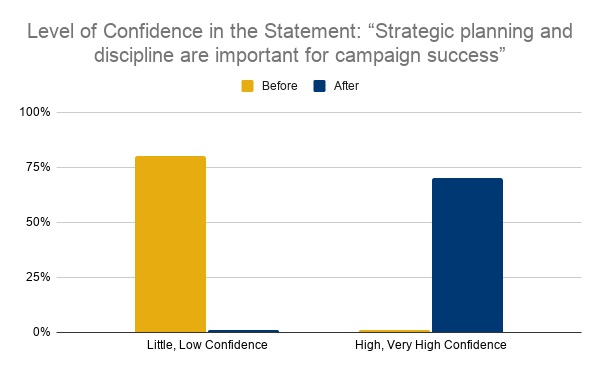
Ke Rafitoson
Ke Rafitoson taught “Citizens’ Mobilization in the Quest for Social and Political Justice: Theory and Practice” at the Université Catholique de Madagascar during the Winter 2020 semester. Students exhibited a significant increase in knowledge as well as an increase in their comfort level speaking about, participating in, and leading civil resistance campaigns.

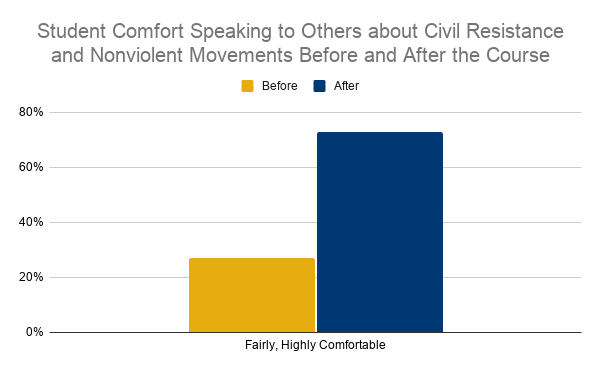


Rajendra Senchurey
Rajendra Senchurey taught “The Power of Civil Resistance” at Mid Western University in Lalitpur, Nepal, in the Fall 2019 semester. Students increased their comfort level in speaking about civil resistance and developed skills in planning and implementing a nonviolent campaign.




Maurício Vieira
Maurício Vieira taught “Introduction to Peace & Conflict Studies: Nonviolent Civil Resistance” at the Ceará State University (UECE) in Fortaleza, Brazil, during the Spring 2020 semester. Student knowledge shifted from predominantly “no knowledge” and “little knowledge” toward “moderate” and “advanced knowledge” during the course. Students also experienced a significant increase in their desire to continue to study civil resistance and to incorporate this field of study within their respective areas of research. And even though the majority of participants remained at the same level of involvement in civil resistance as before the course, 30 percent of students reported much greater involvement three months following the end of the course.
